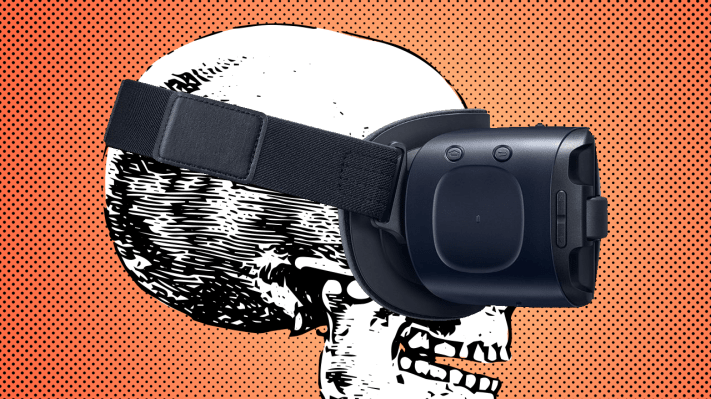The Note 7 debacle hasn’t been good for anyone — not for Samsung, not for Android, not for consumers, not for airlines, not for fire departments, not for stylus-lovers and certainly not for Oculus.
The Facebook-owned virtual reality powerhouse currently has its entire mobile VR future pinned on the successes of Samsung’s handsets and the discontinuation of Note 7 production is likely going to stunt Oculus’s Gear VR sales (and brand) in a pretty damning way.
Today, shortly before Samsung issued a recommendation that all Note 7 users shut off their devices, Oculus disabled Note 7 support for the Gear VR. Users on Reddit discovered the message this morning.
Exploding phones admittedly do not seem ideal for a peripheral that straps the phone to your face, so the real surprise is that it took this long.
The success of the Gear VR is intimately tied to Samsung in more ways that just the phones. Samsung injected major life into the Gear VR platform by capitalizing on the excitement of the Galaxy S7 and shipping a ton of free headsets with pre-orders.
The $99 Gear VR is currently Oculus’s main touch point with consumers, most of whom have likely not even seen higher-end VR systems like the Rift. Oculus announced at their OC3 conference last week that there were over 1 million monthly active users on Gear VR, much of this likely having a lot to do with giveaways on the part of Samsung. No official numbers are out there in terms of sales, but analysts from SuperData Research estimate that while the Oculus Rift will sell just over 355 thousand units this year, there will be over 2.3 million Gear VR’s in the wild by year’s end.
Long story short, Gear VR is huge to Oculus’s brand and now the platform’s immediate future is likely going to see a very unfortunate period of slowed growth given that the next new compatible device from Samsung probably won’t emerge until next spring.
This comes as Oculus just released an upgraded model of the Gear VR specially designed to accommodate the Note 7 (while also backwards-compatible with other Galaxy models). It added a USB Type-C connection, added a bit of padding to make the experience more comfortable and opened up the slot a bit to accommodate the larger 7’s larger form factor.
With the Note 7 now deceased, no one has any explicit reason to buy the new headset; the old one will work just fine and is selling for $55 on Amazon right now, nearly half the price of the new model. For the time being, the new Gear VR is a peripheral waiting on a product.
(I’ve reached out to Oculus for comment on how the Note 7 production cease will affect the rollout of the new Gear VR and will update if I hear anything back.)
The worst thing that can happen for Oculus right now is a six month stalling of customers with brand new phones who might have been interested in checking out VR. Without a major Samsung launch to entice consumers to Oculus, for a bit the company will have to sell itself through its new content rather than piggybacking off the sales of a new smartphone.
All of this comes as Google is readying for the launch of their mobile VR platform, Daydream, which already has multiple handset makers, including Samsung, ready to build compatibility for the platform into their devices. Google’s first headset, the Daydream View, is launching next month and includes a VR motion controller. The platform capitalizes on a new VR mode in Android Nougat which brings low-latency VR to new smartphones with OLED displays.
In the end, Oculus was fortunate to make it out of this situation without any exploding storylines that incorporated a Gear VR headset, but by losing the newest phone on their rather exclusive platform, the headset maker is going to have to shift its mobile strategies if it hopes to keep hype alive for itself and the mobile virtual reality platform.
